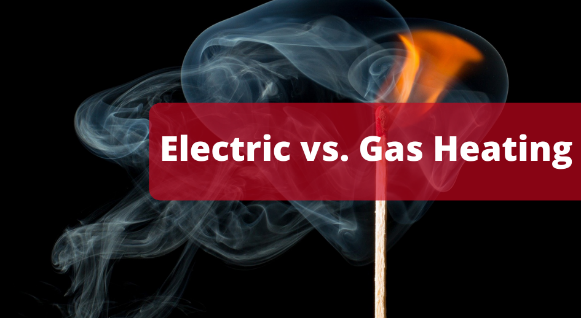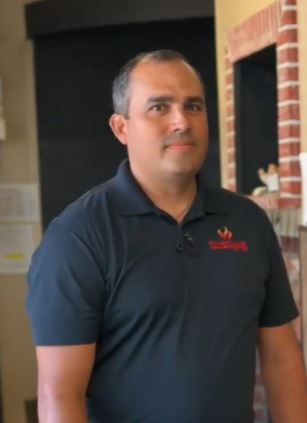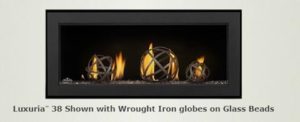
On August 24th, the City of Kansas City, Missouri held a council meeting in which they voted on the Kansas City Climate Protection & Resiliency Plan. In this CPRP plan, the city is talking about restricting the use of natural gas in new construction. The idea is to move toward electric power and more sustainable energy sources, i.e., solar and wind. The goal, net zero by 2050.
Over a period of almost 4 hours the city council listened to the public voice their concerns for adopting this policy. We heard from both sides of this issue, and it was highly informative. I sat next to a guy with a Sierra Club backpack, who gave his testimony on what the city meant to him and how important the city was to him. He encouraged us to leave it in good, if not better, shape for future generations by reducing the amount of coal the power plants use to create our electricity.
On the other side, we also heard testimony from both the local utilities companies (electric and gas) as to their attempts to reduce dependence on non-renewable resources. To jeers of some in the audience, the executive team of the utility’s companies tried to encourage the council and public that they had made progress in switching to more sustainable resources. They are just not there yet.
While some may have viewed this meeting as contentious, I found it to be remarkably interesting as I listened and learned from both sides. I was particularly impressed with 3rd District Councilwoman, Melissa Robinson. She asked several good questions related to the affordability of switching to electric energy sources for members of her district. She put the “servant” in public servant. Kudos to Ms. Robinson for engaging the public in a positive manner.
As a fireplace company, we have an interesting perspective toward this change out. On the surface, it would be easy for our industry to appear to be only concerned with protecting our business’s interests in trying to delay the transition to electric. I would like to give a deeper perspective on this perception and offer our help as we truly are all in this together as a society.
I look forward to the day that we have clean energy sources. Stewardship in all aspects of my life is a critical part of my decision-making process. My wife would tell you that I am the guy who spends 5 minutes comparing efficiency of light bulbs at the hardware store. We also have an all-electric vehicle as well as a hybrid vehicle. My kids would also tell you at home that they know the dire consequences of them “messing” with our Nest smart thermostats at home. What dad has not spent a considerable amount of time telling their household, “Close the door to the outside”, “turn off the lights and ceiling fans”, “are we trying to cool the outdoors?”. I am that guy.
So, while I am eager for the migration to a cleaner source of energy, I do fear that our current infrastructure will not be able to manage the demand through the colder months when the need for heat increases. As a member of the National Association of the Remodeling Industry (NARI – pronounced nair-e), I have had chances to talk with companies in the HVAC industry. While heat pumps have advanced, they still have room for improvement and have special considerations in terms of installations.
I have an all-electric car, which I love, but I can tell you that my energy bill has more than doubled in the amount of electricity I consume due to over night charging. Fortunately, Evergy offers a “time of use” plan that significantly reduces my rate between midnight and 6:00am. My car is smart enough to not charge until after midnight. I read an article today from the California Independent System Operator asking residents to “avoid using major appliances & charging electric vehicles” between 4pm and 9pm. Their grid is overloaded due to a heat wave. YES, we do need “clean” energy!
In February 2021, we had rolling black outs in the Midwest due to overload and/or poor maintenance to the power grid. I worry as we push harder to all electric, will our grid be able to manage the demand?
As a heating source, electricity just struggles compared to natural gas. For those who remember their High School chemistry days, heat is most measured in btu’s. As defined by Webster’s dictionary, a British thermal unit is “the quantity of heat required to raise the temperature of one pound of water one degree Fahrenheit at a specified temperature (such as 39°F)”.
A simpler definition by the U.S. Energy Information Administration says, “One British thermal unit (Btu) is approximately equal to the energy released by burning a match.”
Our industry offers both electric, gas, wood, and alcohol heating options for homes, so we are quite familiar with the pros and cons on all types. While electric is relatively new, it is growing faster than any other category. So how does electric compare to the more established heat sources? Well, it depends…
Our goal at Fireplace & BarBQ Center is to help educate our neighbors and community by sharing the knowledge we have accumulated over the years. We hope by sharing this information it will help the consumer make the best decision for their situation. While our industry continues to develop more efficient products (some gas fireplaces are so efficient the vent pipes can be plastic), the following is our best attempt to explain the most popular products we see as of September 2022.
At Fireplace and BarBQ Center our non-commissioned team strives to accomplish at least the following three things with every interaction with the customer:
- LISTEN to the customer.
- LEARN what the customer is trying to accomplish.
- RECOMMEND the most cost-effective solution for the customer.
To simplify, we are using the above match analogy. The typical match equivalent heat from each category can be as follows. We are using August 2022 local gas and electricity rates.
| Appliance | Btu* | Cost/Hour | Pros | Cons |
|---|---|---|---|---|
| Electric Heater – 110V | 4,695 | $0.18 cents @ $0.14 kWh rate |
|
|
| Electric Heater – 240v | 8,794 | $0.36 cents @ .14 kWh rate |
|
|
| Vent-free Gas Logs | 36,000 | .34 cents
@ .95 CCF rate |
|
|
| Direct Vent Fireplaces | 40,000 | $0.38 cents
@ $0.95 CCF rate |
|
|
| Vented Gas Logs | 90,000 | $0.86 cents
@ $0.95 CCF rate |
|
|
| Outdoor firepits | Up to 200,000 | $1.90 @ $0.95 CCF rate |
|
|
*(Number of matches)

Proud member of Kansas City NARI

Fireplace & Bar-B-Q Center
10470 Metcalf
Overland Park, KS 66212
Phone: 913.383.2286
E-mail: info@FireplaceCenterKC.com
Store Hours
Monday: 9 to 6
Tuesday: 9 to 6
Wednesday: 9 to 6
Thursday: 9 to 6
Friday: 9 to 6
Saturday: Closed
Sunday: Closed

